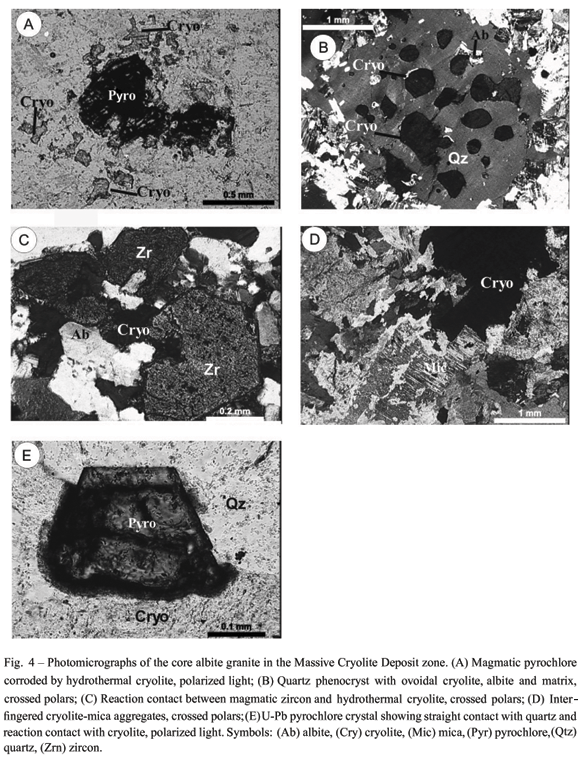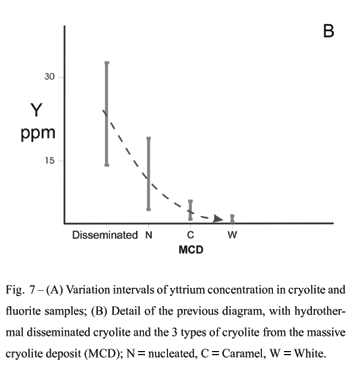This work aims at the geochemical study of Pitinga cryolite mineralization through REE and Y analyses in disseminated and massive cryolite ore deposits, as well as in fluorite occurrences. REE signatures in fluorite and cryolite are similar to those in the Madeira albite granite. The highest ΣREE values are found in magmatic cryolite (677 to 1345 ppm); ΣREE is lower in massive cryolite. Average values for the different cryolite types are 10.3 ppm, 6.66 ppm and 8.38 ppm (for nucleated, caramel and white types, respectively). Disseminated fluorite displays higher ΣREE values (1708 and 1526ppm) than fluorite in late veins(34.81ppm). Yttrium concentration is higher in disseminated fluorite and in magmatic cryolite. The evolution of several parameters (REEtotal, LREE/HREE, Y) was followed throughout successive stages of evolution in albite granites and associated mineralization. At the end of the process, late cryolite was formed with low REEtotal content. REE data indicate that the MCD was formed by, and the disseminated ore enriched by (additional formation of hydrothermal disseminated cryolite), hydrothermal fluids, residual from albite granite. The presence of tetrads is poorly defined, although nucleated, caramel and white cryolite types show evidence for tetrad effect.
cryolite; REE; Y; Pitinga; Amazonia











